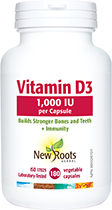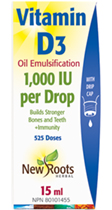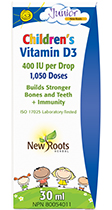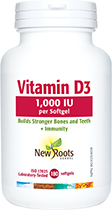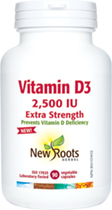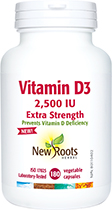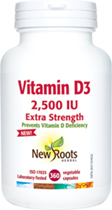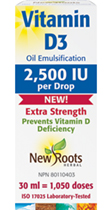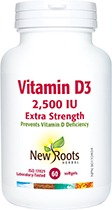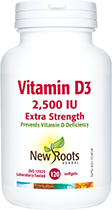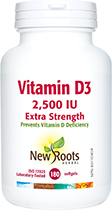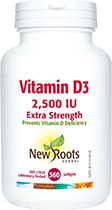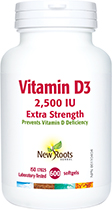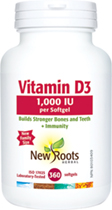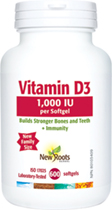Summertime Fun, Sun, and Exercise
Ah! summer—long days full of sunshine and heat. Time to soak in some sun and enjoy the great outdoors! But take care, because too much sun exposure at once can cause painful sunburns and, over time, can increase the risk of skin changes, skin cancer, and eye injuries such as cataracts.[1] And it is very easy to overheat when physically active in the summertime.
Here are some ideas to manage the sunshine and heat this summer, while maintaining optimal health.
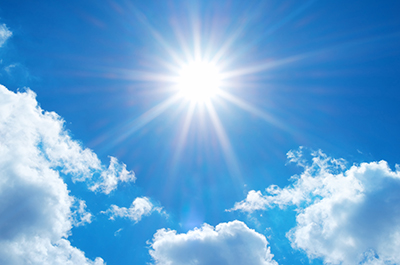 Vitamin D, the “Sunshine Vitamin”
Vitamin D, the “Sunshine Vitamin”
Vitamin D is an essential fat-soluble vitamin that plays a role in bone health, mood regulation, and immunity.[2] The average healthy Canadian aged 3 to 70 (including pregnant and breast-feeding women) requires between 400 and 600 International Units (IU) of vitamin D per day.[3]
You may have heard that vitamin D is produced when our skin is exposed to sunshine; this is true. Vitamin D is called the “sunshine vitamin” because when our skin is hit with ultraviolet (UV) radiation from the sun, a complex series of chemical reactions occurs and, in the end, vitamin D is produced. But even with sensible sun exposure, numerous factors can reduce this production, including darker skin pigmentation, aging, obesity, and use of sunscreen. Because the amount of sunshine we need to produce the required daily dose of vitamin D will vary, supplementation can ensure your body does not become deficient.
During summer months in Canada, sun exposure can quickly tip from “healthy” to “too much.” How do we prevent long-term risks of skin changes, skin cancer, and eye issues?
Choose Your Time of Day
One key tip is to avoid outdoor activity when the sun and heat are most intense—usually between 10 a.m. and 4 p.m.[4] And when you are outside, wear a wide-brimmed hat so that its shade covers your face, neck, and ears, and consider donning long-sleeved shirt and pants.[5] Lighter colours will absorb less heat than dark, keeping you cooler, and loose-fitting clothes—as opposed to tight or form-fitted clothing—can also help reduce the risk of overheating due to sun exposure.[6]
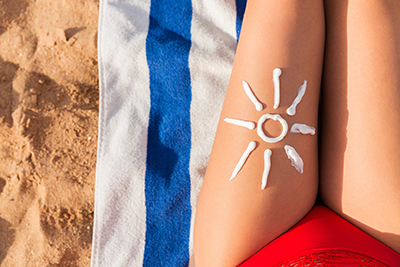 Protect Your Skin
Protect Your Skin
Sunscreen is also important; it protects the skin your clothing does not cover. The best choice is to apply a water-resistant sunscreen with a minimum sun protection factor (SPF) of 30 to all exposed skin at least 20 minutes prior to sun exposure, and reapply every 2 hours and after swimming or periods of sweating—even if the sunscreen is “water-resistant.”
Also consider using a lip balm with an SPF rating, and be sure to wear sunglasses that block both UVA and UVB rays to protect both your lips and eyes.[7] Something else to consider: Be aware of your surroundings; for example, if you spend holidays in the mountains or at the beach, snow, rocks, sand, and water reflect the sun’s rays and can magnify exposure.[8]
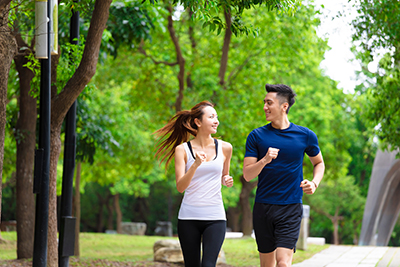 Exercise, Safely
Exercise, Safely
It is also important to take heat levels into account when planning outdoor activities. Regular exercise is important, as it both improves overall health and reduces risk of certain diseases.[9] Physical activity can help improve energy, decrease stress, and improve physical strength, prolonging independence and mobility with age.[10] Research also suggests that regular exercise can help reduce the risk of developing cancer, obesity, high blood pressure, heart disease (including heart attack and stroke), and type 2 diabetes.[11]
The Public Health Agency of Canada recommends at least 2½ hours of activity per week for adults 18 to 65 to achieve these health benefits, at least 10 minutes a session, with both moderate to vigorous aerobic activity throughout the week (where breathing and heart rate are increased and you can speak at most a few words at a time between breaths), and activities that target muscle and bone heath at least 2 days a week (such as push-ups, sit-ups, climbing stairs, walking, running, etc.).[12]
But starting or maintaining a physical activity regime in the summertime may require some thought and planning to do so safely.
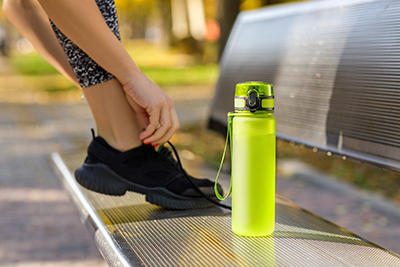 Proper Hydration is Key
Proper Hydration is Key
It is important to not get overheated, which is much more likely to happen in the summertime. In addition to the above recommendations to avoid the heat of the day and cover up to minimize sun exposure, it is important to maintain adequate hydration and electrolyte levels when physically active. Electrolytes—the chemical components that ensure adequate cellular function—need to be replaced when sweating heavily, such as during exercise or heat exposure. Drink water before, during, and after physical exercise to replenish fluids lost by sweating. Avoid alcoholic beverages, which contribute to dehydration, as well as “sport drinks,” that are typically high in sugar.[13], [14] Alternative ideas for replacing fluids and electrolytes are water-rich fruits and vegetables, such as watermelon, oranges, celery, and cucumbers; also consider using sugar-free electrolyte mixes that can be added to water. In addition to how you’re feeling, your urine colour can provide a good indication of your hydration status: Dark yellow urine indicates dehydration, while pale to light yellow usually indicates adequate hydration.
Conclusion
As always, be mindful of how you’re feeling, and stop activities and seek shade or a cool environment if you feel like your skin is starting to burn or if you feel faint, dizzy, or ill. Consult your health-care provider if you have any health questions or concern, especially about what exercises are safe given your personal medical conditions and health history. And finally, have fun this summer!
 Dr. Katie DeGroot, BSc, ND, MScN
Dr. Katie DeGroot, BSc, ND, MScN
Dr. DeGroot is an Alberta-registered naturopathic doctor who also holds a Master of Science in Nutrition. She offers nutritionally focused care and has a special interest in digestive issues and supportive mental health-care.
drkatiedegroot.ca
References
[1] familydoctor.org editorial staff. “Effects of sun exposure.” familydoctor.org · https://familydoctor.org/effects-early-sun-exposure/ · Updated 2020-09-15. Accessed 2022-05-08.
[2] [No author listed] “Vitamin D and your health: Breaking old rules, raising new hopes.” Harvard Health Publishing · https://www.health.harvard.edu/staying-healthy/vitamin-d-and-your-health-breaking-old-rules-raising-new-hopes · Published 2021-09-13. Accessed 2022-05-08.
[3] [No author listed.] “Dietary reference intakes.” Canada.ca · https://www.canada.ca/en/health-canada/services/food-nutrition/healthy-eating/dietary-reference-intakes/tables/reference-values-vitamins-dietary-reference-intakes-tables-2005.html · Updated 2010-11-29. Accessed 2022-05-08.
[4] [No author listed.] “Sun safety.” Johns Hopkins Medicine · https://www.hopkinsmedicine.org/health/wellness-and-prevention/sun-safety · 2022. Accessed 2022-05-08.
[5] [No author listed.] “Sun exposure.” Travelers’ Health. Centers for Disease Control and Prevention · https://wwwnc.cdc.gov/travel/page/sun-exposure · Reviewed 2018-12-13. Accessed 2022-05-08.
[6] “Sun safety.” Johns Hopkins Medicine.
[7] “Sun exposure.” Travelers’ Health. Centers for Disease Control and Prevention.
[8] “Sun exposure.” Travelers’ Health. Centers for Disease Control and Prevention.
[9] [No author listed.] “Physical activity and healthy eating.” Canada’s Food Guide. Canada.ca · https://food-guide.canada.ca/en/tips-for-healthy-eating/physical-activity-healthy-eating/ · Updated 2022-05-06. Accessed 2022-05-08.
[10] [No author listed.] “Physical activity and your health.” Canada.ca · https://www.canada.ca/en/public-health/services/being-active/physical-activity-your-health.html · Updated 2018-10-01. Accessed 2022-05-08.
[11] “Physical activity and your health.” Canada.ca.
[12] [No author listed.] “Physical activity tips for adults (18-64 years).” Canada.ca · https://www.canada.ca/en/public-health/services/publications/healthy-living/physical-activity-tips-adults-18-64-years.html · Updated 2018-10-01. Accessed 2022-05-08.
[13] “Sun exposure.” Travelers’ Health. Centers for Disease Control and Prevention.
[14] “Physical activity and healthy eating.” Canada’s Food Guide. Canada.ca.

 Stores
Stores
